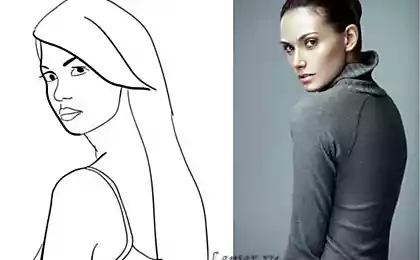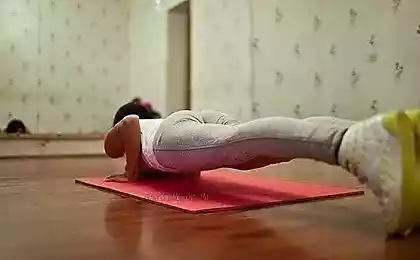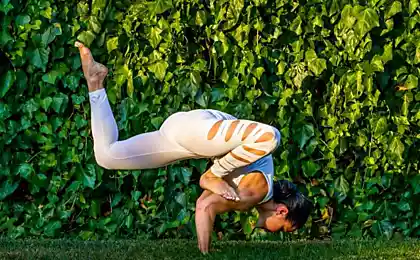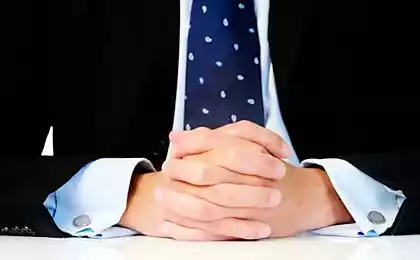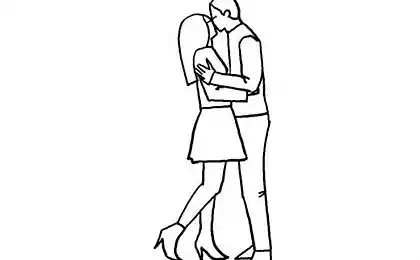537
Gestures of uncertainty: what I can tell the hands of the interlocutor
To hide behind the barrier of the usual human desire. This we learn in early childhood. Man seeks to protect himself from others. As a child we hide behind material objects — tables, chairs, furniture, behind his mother's skirt, if you feel that he was in a difficult situation.
As we grow older, we change our behavior. It is not so obvious. Six-year-old wouldn't want to hide behind the cupboard, it is rather tightly crossed arms on the chest, if there is a scary situation. Teen already knows how to slightly disguise the gesture. It relaxes hands and complements your posture with crossed legs.
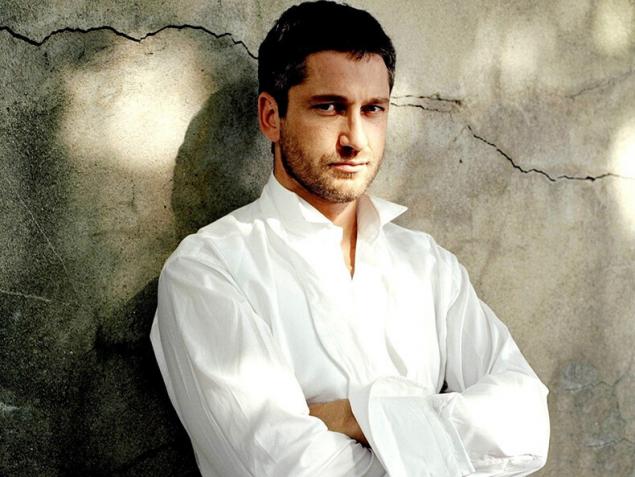
Becoming older, we master the art to make a protective gesture even less noticeable. Bringing one hand or both hands crossed on the chest, we, in essence, forming a barrier, trying to protect themselves from the threat or undesirable circumstances.
One thing is certain: when a person is nervous, have a poor attitude or a defensive position, he tightly crosses his arms. This posture suggests that the person feels threatened.
Studies posture with crossed arms conducted in the United States, gave interesting results. A group of students invited to attend the course of lectures. One of the group told me not to cross no hands, no feet, sitting quietly and relaxed. At the end of each lecture, the researchers analyzed the degree of digestibility of the material and the ratio of students to lecturer.
The second part of the same group told, on the contrary, to sit in a lecture with crossed arms. The results showed that the group who sat with crossed arms, has learned the material by 38 per cent worse than those students who listened to a lecturer in a relaxed position. The second group also demonstrated a more critical attitude to the speaker and to the topic of the lecture.
These studies showed that when the listener is crossing his arms, he not only begins to treat interviewee more negatively, but less attentive to his words. That's why in many training centers use chairs with armrests so the students less tempted to cross my arms on my chest. Many people claim that they cross their arms simply because they are so comfortable. It is their habit. But any gesture is the feeling of comfort only when it fits your mood. So, if you are negative, critical, if you are nervous or are trying to defend that posture with crossed arms will seem easy.
Remember that non-verbal communication is any gesture is important not only for the person who makes it, but for his companion. You may be comfortable to sit with crossed arms, tilted back his head and straightened his back, but do not forget that your partner will accept such a position unambiguously negative.
Standard crossing arms
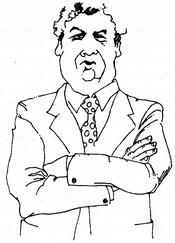
This position is characterized by crossing both arms on his chest in an attempt to "hide" from an undesirable situation. There are many provisions with crossed arms, but in this book we will discuss only three main. Standard crossing arms is a universal gesture, indicating a defensive or negative attitude to everything. This posture is characteristic of a person among strangers at a public event, in line at the cafeteria, the Elevator or any other place where he feels safe.
During a recent lecture tour of the United States, I began a workshop with the deliberate blackening of seven highly respected individuals, well known to all the participants and attendees at the conference. Immediately after my verbal attack, I asked the participants not to change posture. All were surprised when I showed them that 90 percent of the audience was sitting with crossed hands.
And this position they took as soon as I began my attack on the respected people. This is clear evidence that people take such a position when they don't agree with what you said. Many speakers can't achieve success because they do not notice that some of the audience sits with crossed arms. Experienced lecturer understands that this posture is a signal that it is time to break the ice, increase the receptivity of the audience, apply some technique that can change the attitude of the listeners.
When, during a personal conversation your interlocutor crosses his arms, then you said something with which he cannot agree. In such a situation it is pointless to continue to insist, although they can verbally Express their consent. Remember that non-verbal signals don't lie, you can cheat. In this case, you should delicately find out what caused the disagreement of your interlocutor and try to make the conversation more confidential nature. Don't forget that as long as his arms remain crossed, a negative attitude persists. This position was caused by a certain attitude, and it is capable of only increase.
I can recommend you a simple but very effective method of dealing with this pose. Give the interviewee something — a pen, a book, a notebook. Then he will be forced to change posture, to open up my hands and lean forward. So you will be able to make the interviewee more open and receptive. Another helpful hint. Ask them to lean forward, to consider something important. So he, too, will be forced to withdraw from occupied positions. You can lean over to the person with open palms and say, "I think you want something to ask?" or "what do you think about this?" — and then lean back, showing that they expect a response.
Keep your hand on your mind, you nonverbally show the person that you want to receive honest, heartfelt answer. When I worked as a sales agent, I never started the presentation when he saw that someone from the potential buyers sitting with arms crossed. Only after I was able to translate them into a more open position, I proceeded to business. If this happened in the course of the presentation, I, unlike other agents noticed that the buyer has any objections, and respond correctly to the situation. Unfortunately, many people overlook a very important non-verbal signals, which can adversely affect the success of the negotiations.
Crossing arms, reinforced grip fists

If besides the fact that your partner just crossed his arms on his chest, he also more and clenched his fists, it indicates a hostile oboronitelniye position. This set of gestures in combination with gritted teeth and red cheeks shows that will soon be followed by a serious verbal or even physical attack. To remove hostility, and the situation is not quite clear, it is useful to use the gestures of humility. Stretch out your hand turned palm up.
The person in the picture is clearly hostile. The position of the same men from the previous figure can be called rather defensive.
Girth of the forearm
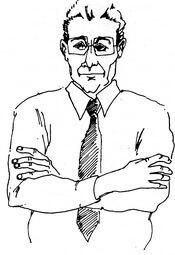
In this position, the person is not only crossing his arms, but densely covered brush of the forearm. This provision increases the standard position and indicates the unwillingness of break hands on any pretext. People are often so strongly gripping the forearm that they whiten the knuckles, because it disturbs the natural circulation of blood. Such a posture characteristic of people waiting to see a doctor or dentist, those who first dared to fly the plane and anxiously awaiting take-off. This situation is indicative of the containment of negative emotions.
In the courtroom you can see how the Prosecutor in the heat of debate crossed on his chest clenched into fists hands, and the lawyer grabbed a brush of the forearm.
The social status of a person also affects the character of the crossing of the hands. Man, feeling his superiority, can prove it, and not clasping the forearm. Let's consider the following situation. At the official reception of the General Director introduced several new staff, which he had not seen before. Greeting them with a dominant handshake, he is at a social distance, with his hands behind his back in position "brush to brush", which is evidence of superiority, or putting one hand in his pocket.
Such a person would not cross my arms out of fear to give nervousness or indecision. For its part, new employees, after greeting the Director, I can cross my arms fully or partially, as the presence of the chief of embarrassing them. Such a posture is comfortable and the Director, and subordinates, as she is quite polite and at the same time indicates the status of the parties to the conversation.

And as the head of Department will meet with young, up-and-coming Manager, who also has a sense of superiority and believes that it takes at least an important position in the company? Most likely after they will exchange a dominant handshake, the young Manager will cross hands on chest, holding the thumbs upright.
This is a defensive variant of the arms extended horizontally, with both thumbs pointing up. This gesture was used by Henry Winkler, playing the role of "cool guy" in the TV series "Happy days". Thumb up talking about self-confidence, crossed arms and feel protected.
Sales agents should be able to analyze the situation and the gestures of the customer to understand if their chosen tactics. If the thumbs went up at the end of the presentation and also the agent noticed other positive gestures of the buyer, it is possible to finish the negotiations and to ask to place an order. If towards the end of the transaction the buyer crossed his hands, clenched into a fist, then ask about the order it would be at least unwise.
Much more useful is to continue the presentation, to ask ask any questions to find out what caused dissatisfaction of the buyer. If the buyer has already managed to say: "no", it will be very difficult to convince him to change his mind. The ability to understand body language will help you to see signs of a negative attitude before it will accept verbal expression, and in this case you will have more time to use that strategy.
Armed people often resort to a defensive posture with arms folded as their weapon already is sufficient protection. Police officers with pistols, very rarely cross their arms unless on duty. But then they usually clench my fists to demonstrate, that by them no one will.
Partial barrier
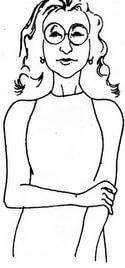
The pose with the crossed arms can sometimes seem too obvious, as it issues surrounding our fear. Most often, we resort to a more delicate version of the partial barrier. This position is characterized by the following: one arm is stretched in such a way to touch or embrace another, as shown in the figure.
Partial barrier can often be seen on the meetings. The man who is a newcomer in the group, may take such an attitude to hide his insecurity. Another popular option partial barrier is the habit of keeping himself in hand. This position is typical of those who stand in front of a group, accepting any reward or delivering a speech. Desmond Morris believes that this posture gives one a feeling of emotional security that is familiar to him from childhood, when parents in scary situations, he took him by the hand.
Disguised crossing arms

Disguised crossing of the hands is a very sophisticated form of gestures, typical of people who constantly have to be on your mind. This policy, sales agents, broadcasters — in short, those who do not want to see their nervousness or lack of confidence was noticed by the audience. As with any other gesture associated with the crossed arms, one arm stretched to touch the other, but instead to touch or embrace her, a person touches a handbag, bracelet, watches, cufflinks or any other object located nearby.
But in this case, the barrier is still formed and gives a person a sense of confidence and security. In those days, when men wore cuff links, they are very often corrected them, crossing the room, or dance hall, that is, in those moments when they were in sight. Because now the cufflinks are not as popular as before, the men began to improve watch, to look at the wallet, rubbing his hands, flexing the button on the cuff of a shirt or to make some other gesture that would allow the owner at least symbolically to interbreed front of the body.
However, for the experienced observer, all of these gestures are obvious enough, since they are all made with only one purpose — to hide the nervousness and uncertainty. Notice the gestures of uncertainty is simple: gather a group of people so that re-entering was in front of your eyes. A good example is the dance hall. Imagine a young man walking across the Playground to invite a lady or man cross the entire hall to receive the award.
Women use less obvious forms of disguised barrier because they are usually in the hands of any objects, bags or bouquets, which perfectly hide the nervousness.
The life of a LOAN: when you live under pressure, a look goes out and betrays turgor
How to save a relationship: 5 pairs of contracts according to Karpman
The most common variant of such an implicit barrier is a glass of wine clenched in both hands. You never came to mind that glass is quite possible to keep and one? The use of both hands allows the insecure person form an almost indefinable barrier. Watching how people use disguised barrier signals, we found that these gestures are used almost everywhere. Many well-known people use this technique without even realizing the true motive of their gestures.published
Source: www.goroskop.ru/publish/open_article/3275/
As we grow older, we change our behavior. It is not so obvious. Six-year-old wouldn't want to hide behind the cupboard, it is rather tightly crossed arms on the chest, if there is a scary situation. Teen already knows how to slightly disguise the gesture. It relaxes hands and complements your posture with crossed legs.

Becoming older, we master the art to make a protective gesture even less noticeable. Bringing one hand or both hands crossed on the chest, we, in essence, forming a barrier, trying to protect themselves from the threat or undesirable circumstances.
One thing is certain: when a person is nervous, have a poor attitude or a defensive position, he tightly crosses his arms. This posture suggests that the person feels threatened.
Studies posture with crossed arms conducted in the United States, gave interesting results. A group of students invited to attend the course of lectures. One of the group told me not to cross no hands, no feet, sitting quietly and relaxed. At the end of each lecture, the researchers analyzed the degree of digestibility of the material and the ratio of students to lecturer.
The second part of the same group told, on the contrary, to sit in a lecture with crossed arms. The results showed that the group who sat with crossed arms, has learned the material by 38 per cent worse than those students who listened to a lecturer in a relaxed position. The second group also demonstrated a more critical attitude to the speaker and to the topic of the lecture.
These studies showed that when the listener is crossing his arms, he not only begins to treat interviewee more negatively, but less attentive to his words. That's why in many training centers use chairs with armrests so the students less tempted to cross my arms on my chest. Many people claim that they cross their arms simply because they are so comfortable. It is their habit. But any gesture is the feeling of comfort only when it fits your mood. So, if you are negative, critical, if you are nervous or are trying to defend that posture with crossed arms will seem easy.
Remember that non-verbal communication is any gesture is important not only for the person who makes it, but for his companion. You may be comfortable to sit with crossed arms, tilted back his head and straightened his back, but do not forget that your partner will accept such a position unambiguously negative.
Standard crossing arms

This position is characterized by crossing both arms on his chest in an attempt to "hide" from an undesirable situation. There are many provisions with crossed arms, but in this book we will discuss only three main. Standard crossing arms is a universal gesture, indicating a defensive or negative attitude to everything. This posture is characteristic of a person among strangers at a public event, in line at the cafeteria, the Elevator or any other place where he feels safe.
During a recent lecture tour of the United States, I began a workshop with the deliberate blackening of seven highly respected individuals, well known to all the participants and attendees at the conference. Immediately after my verbal attack, I asked the participants not to change posture. All were surprised when I showed them that 90 percent of the audience was sitting with crossed hands.
And this position they took as soon as I began my attack on the respected people. This is clear evidence that people take such a position when they don't agree with what you said. Many speakers can't achieve success because they do not notice that some of the audience sits with crossed arms. Experienced lecturer understands that this posture is a signal that it is time to break the ice, increase the receptivity of the audience, apply some technique that can change the attitude of the listeners.
When, during a personal conversation your interlocutor crosses his arms, then you said something with which he cannot agree. In such a situation it is pointless to continue to insist, although they can verbally Express their consent. Remember that non-verbal signals don't lie, you can cheat. In this case, you should delicately find out what caused the disagreement of your interlocutor and try to make the conversation more confidential nature. Don't forget that as long as his arms remain crossed, a negative attitude persists. This position was caused by a certain attitude, and it is capable of only increase.
I can recommend you a simple but very effective method of dealing with this pose. Give the interviewee something — a pen, a book, a notebook. Then he will be forced to change posture, to open up my hands and lean forward. So you will be able to make the interviewee more open and receptive. Another helpful hint. Ask them to lean forward, to consider something important. So he, too, will be forced to withdraw from occupied positions. You can lean over to the person with open palms and say, "I think you want something to ask?" or "what do you think about this?" — and then lean back, showing that they expect a response.
Keep your hand on your mind, you nonverbally show the person that you want to receive honest, heartfelt answer. When I worked as a sales agent, I never started the presentation when he saw that someone from the potential buyers sitting with arms crossed. Only after I was able to translate them into a more open position, I proceeded to business. If this happened in the course of the presentation, I, unlike other agents noticed that the buyer has any objections, and respond correctly to the situation. Unfortunately, many people overlook a very important non-verbal signals, which can adversely affect the success of the negotiations.
Crossing arms, reinforced grip fists

If besides the fact that your partner just crossed his arms on his chest, he also more and clenched his fists, it indicates a hostile oboronitelniye position. This set of gestures in combination with gritted teeth and red cheeks shows that will soon be followed by a serious verbal or even physical attack. To remove hostility, and the situation is not quite clear, it is useful to use the gestures of humility. Stretch out your hand turned palm up.
The person in the picture is clearly hostile. The position of the same men from the previous figure can be called rather defensive.
Girth of the forearm

In this position, the person is not only crossing his arms, but densely covered brush of the forearm. This provision increases the standard position and indicates the unwillingness of break hands on any pretext. People are often so strongly gripping the forearm that they whiten the knuckles, because it disturbs the natural circulation of blood. Such a posture characteristic of people waiting to see a doctor or dentist, those who first dared to fly the plane and anxiously awaiting take-off. This situation is indicative of the containment of negative emotions.
In the courtroom you can see how the Prosecutor in the heat of debate crossed on his chest clenched into fists hands, and the lawyer grabbed a brush of the forearm.
The social status of a person also affects the character of the crossing of the hands. Man, feeling his superiority, can prove it, and not clasping the forearm. Let's consider the following situation. At the official reception of the General Director introduced several new staff, which he had not seen before. Greeting them with a dominant handshake, he is at a social distance, with his hands behind his back in position "brush to brush", which is evidence of superiority, or putting one hand in his pocket.
Such a person would not cross my arms out of fear to give nervousness or indecision. For its part, new employees, after greeting the Director, I can cross my arms fully or partially, as the presence of the chief of embarrassing them. Such a posture is comfortable and the Director, and subordinates, as she is quite polite and at the same time indicates the status of the parties to the conversation.

And as the head of Department will meet with young, up-and-coming Manager, who also has a sense of superiority and believes that it takes at least an important position in the company? Most likely after they will exchange a dominant handshake, the young Manager will cross hands on chest, holding the thumbs upright.
This is a defensive variant of the arms extended horizontally, with both thumbs pointing up. This gesture was used by Henry Winkler, playing the role of "cool guy" in the TV series "Happy days". Thumb up talking about self-confidence, crossed arms and feel protected.
Sales agents should be able to analyze the situation and the gestures of the customer to understand if their chosen tactics. If the thumbs went up at the end of the presentation and also the agent noticed other positive gestures of the buyer, it is possible to finish the negotiations and to ask to place an order. If towards the end of the transaction the buyer crossed his hands, clenched into a fist, then ask about the order it would be at least unwise.
Much more useful is to continue the presentation, to ask ask any questions to find out what caused dissatisfaction of the buyer. If the buyer has already managed to say: "no", it will be very difficult to convince him to change his mind. The ability to understand body language will help you to see signs of a negative attitude before it will accept verbal expression, and in this case you will have more time to use that strategy.
Armed people often resort to a defensive posture with arms folded as their weapon already is sufficient protection. Police officers with pistols, very rarely cross their arms unless on duty. But then they usually clench my fists to demonstrate, that by them no one will.
Partial barrier

The pose with the crossed arms can sometimes seem too obvious, as it issues surrounding our fear. Most often, we resort to a more delicate version of the partial barrier. This position is characterized by the following: one arm is stretched in such a way to touch or embrace another, as shown in the figure.
Partial barrier can often be seen on the meetings. The man who is a newcomer in the group, may take such an attitude to hide his insecurity. Another popular option partial barrier is the habit of keeping himself in hand. This position is typical of those who stand in front of a group, accepting any reward or delivering a speech. Desmond Morris believes that this posture gives one a feeling of emotional security that is familiar to him from childhood, when parents in scary situations, he took him by the hand.
Disguised crossing arms

Disguised crossing of the hands is a very sophisticated form of gestures, typical of people who constantly have to be on your mind. This policy, sales agents, broadcasters — in short, those who do not want to see their nervousness or lack of confidence was noticed by the audience. As with any other gesture associated with the crossed arms, one arm stretched to touch the other, but instead to touch or embrace her, a person touches a handbag, bracelet, watches, cufflinks or any other object located nearby.
But in this case, the barrier is still formed and gives a person a sense of confidence and security. In those days, when men wore cuff links, they are very often corrected them, crossing the room, or dance hall, that is, in those moments when they were in sight. Because now the cufflinks are not as popular as before, the men began to improve watch, to look at the wallet, rubbing his hands, flexing the button on the cuff of a shirt or to make some other gesture that would allow the owner at least symbolically to interbreed front of the body.
However, for the experienced observer, all of these gestures are obvious enough, since they are all made with only one purpose — to hide the nervousness and uncertainty. Notice the gestures of uncertainty is simple: gather a group of people so that re-entering was in front of your eyes. A good example is the dance hall. Imagine a young man walking across the Playground to invite a lady or man cross the entire hall to receive the award.
Women use less obvious forms of disguised barrier because they are usually in the hands of any objects, bags or bouquets, which perfectly hide the nervousness.
The life of a LOAN: when you live under pressure, a look goes out and betrays turgor
How to save a relationship: 5 pairs of contracts according to Karpman
The most common variant of such an implicit barrier is a glass of wine clenched in both hands. You never came to mind that glass is quite possible to keep and one? The use of both hands allows the insecure person form an almost indefinable barrier. Watching how people use disguised barrier signals, we found that these gestures are used almost everywhere. Many well-known people use this technique without even realizing the true motive of their gestures.published
Source: www.goroskop.ru/publish/open_article/3275/
How related your hurt and disease to your children
The commandments of the titans: WHAT the most successful people do every day
